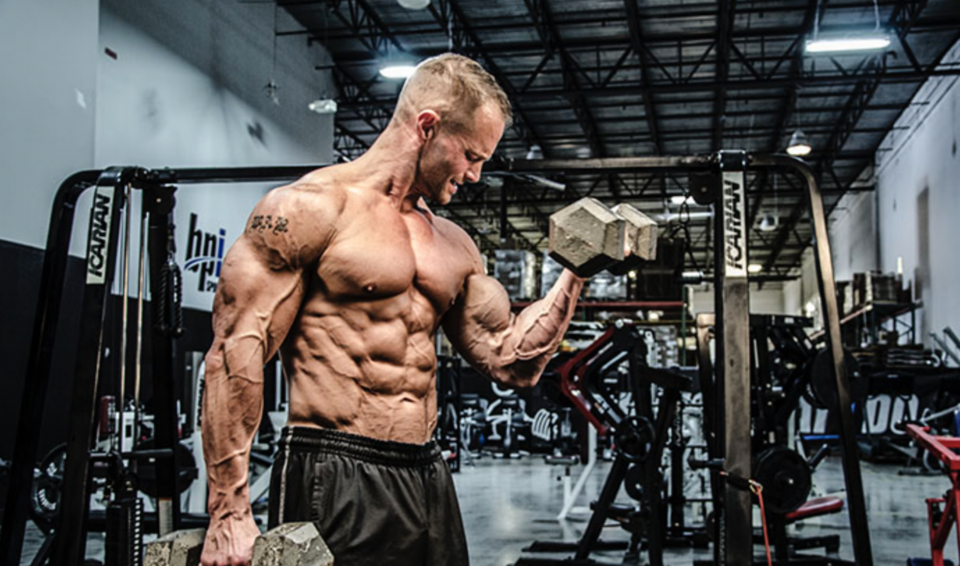Every guy out there, whether they use the terms “jacked,” “diesel,” or “yoked,” shares the common aspiration of achieving impressive muscular size. While a chiseled physique might look great on social media, the reality is that in person, 13-inch arms and narrow shoulders won’t exactly turn heads.
So, where’s the starting point for this pursuit? While you might have come across countless articles by different authors, the fundamental points should remain consistent. This repetition is because these points are founded on proven facts, which many individuals seem to evade.
The allure of discovering hidden secrets often overshadows the effectiveness of hard work and dedication in achieving one’s goals. While some of the following information might be new to certain readers, it should be a familiar reminder for those who have been seriously training for a while.
Foundations of Training for Size
The bedrock of gaining size is lifting weights – a no-brainer. Building a robust back, massive legs, or a well-defined chest is a gradual outcome, achieved through patience and effort, not through protein shakes and constant meals.
Here’s a key principle to always remember: progressive overload is the cornerstone of effective training. Without continuously increasing your total work output compared to your previous sessions, positive adaptations won’t occur.
However, progressive overload encompasses more than just adding weights. Factors like repetitions, sets, time under tension, density, range of motion, exercise difficulty, or order can all be manipulated for progress. This becomes especially important as lifters advance and can’t continuously slap more plates on the bar.
Specificity and overload go hand-in-hand in training. Your training should align with the aspects you want to improve. For example, if you’re looking to enhance your squat, focus on variations of the squat pattern.
Remember, long-term progress requires sticking to a single program for at least 3-4 months. Consistency is key.
Intensity versus Volume: It’s a Balance
Intensity and volume each have their role in a program, but their application matters. Successful program design involves the appropriate prioritization of these variables within an athlete’s mesocycle.
Volume shouldn’t be abused. While training is a stressor that prompts adaptation, there’s a threshold beyond which additional stress doesn’t guarantee superior gains. Gradual progression is crucial, as overloading beyond reason doesn’t ensure better results.
The Power of Supplementation, Simplified
Supplements often become the go-to solution when gains stall. However, they’re not a substitute for proper nutrition and training. Understanding the basics of eating and training is paramount.
Effective and well-researched supplements include creatine monohydrate, fish oil, vitamin D, and a good multivitamin.
Nutrition: The Elephant in the Room
Nutrition plays a central role in achieving your desired physique. It’s often the missing piece of the puzzle. For athletes struggling to gain weight, it’s crucial to overcome the hurdle of caloric intake.
Eating is a critical task. You need to eat even when you’re not particularly hungry. Accept that sometimes you won’t feel like eating, but your goals demand consistent effort.
Affordability is often cited as an obstacle to healthy eating. However, a limited budget doesn’t have to limit your nutritional choices. Buying in bulk, using cheap carb sources, and seasonal produce can help manage costs.
Facing Appetite and Plateau Challenges
Appetite disparities are common, and some people naturally struggle to consume enough calories. To tackle this, focus on eating more frequently, reduce high-fiber foods, incorporate liquid calories, and increase fruit intake.
Success Lies in Your Determination
Gaining size requires dedication, patience, and a consistent approach. While the article might seem lengthy, here are the key takeaways:
- Base your training on specificity and progressive overload.
- Be cautious about overloading with excessive volume; quality matters.
- Balance intensity and volume for comprehensive hypertrophic adaptations.
- Utilize supplements wisely: creatine, fish oil, vitamin D, and a good multivitamin.
- Nutrition is your foundation; eat adequately to support your training.
- Gaining size is a long-term commitment; consistency trumps short-term fixes.
Ultimately, it’s your commitment that determines your success. Embrace the basics, work hard, and results will follow.

